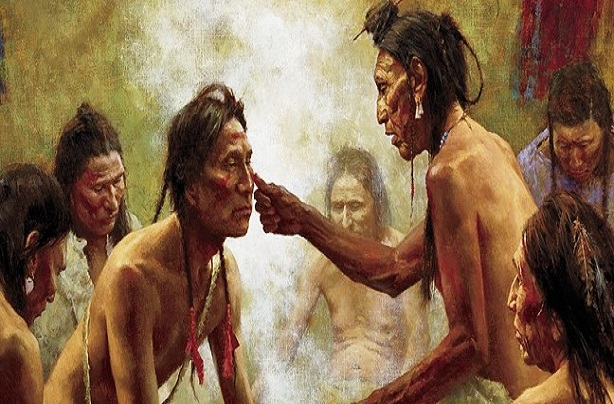31 Long-Forgotten Native American Medical Cures
When it comes to herbal remedies, almost every person is familiar with purple coneflower as an antibiotic, aloe as a skin conditioner and a topical anesthetic, and willow bark as a painkiller. But, compared to the treatments and insights that were discovered and used by the Native American medicine, this is just common knowledge.
The treatments of their era were based on using herbal remedies and other alternative forms of medicine.

Below is a list of unique North American trees, fruits, flowers and plants, defined by Native American tribes who relied heavily on their amazing benefits.
Once you realize how effective these ancient cures can be you’ll definitely save the list.
1. Alfalfa
It is used to aid blood clotting and relieves digestion. Alfalfa can be also included in treatment of bladder and kidney conditions, arthritis and bone strength. It boosts the immune system.
2. Aloe
When its leaves are squeezed it extrudes a thick sap which is used to treat wounds, burns and bites from insects.
3. Aspen
The inner bark is used in a tea to treat coughs, fever and pain. It contains salicin, which is the main ingredient for aspirin.
4. Bee pollen
When you mix it with food it can aid digestion, boost energy and improve the immune system. Still, be aware, you might likely be allergic to it, if you are already allergic to bee stings.
5. Beeswax
It has been used as a cure for bites from insects and burns. It should only be used externally.
6. Blackberry
The bark, leaves and root when smashed and infused in a tea are used to reduce inflammation, treat diarrhea and stimulate the metabolism. As a gargle, it can be used to treat mouth ulcers, sore throats and gums’ inflammation.
7. Black Raspberry
When its roots are crushed and infused in a tea, it can be useful to relieve diarrhea, coughs and general intestinal distress.
8. Buckwheat
Its seeds are used as porridge or in soups to relieve diarrhea, lower blood pressure and help with blood clotting.
9. Cayenne
When drink as a tea or taken with food, the pods are used as a reliever of pain. It is also used to treat digestive distress and arthritis. Sometimes it can be applied to wounds as a powder and act as an anesthetic to numb the pain.
10. Chamomile
The flowers and leaves are used as a tea to treat nausea and intestinal problems.
11. Chokecherry
It is considered as an all-purpose medicine by the Native American tribes. The berries were dried, pitted and crushed in a tea to treat colds, flu, coughs, nausea, diarrhea and inflammation. As a poultice, it is used to treat wounds and burns.
12. Echinacea
Aka purple coneflower, it is used to enhance the immune system, fight fever and infections. It can be also used as an antiseptic and general treatment for coughs, colds and flu.
13. Eucalyptus
The oil from the roots and leaves can be used in an ordinary treatment when infuse with tea to treat sore throat, fever, coughs and flu. Nowadays, it is used as an ingredient in cough drops.
14. Fennel
A plant with a licorice taste, chewed or used in a tea can relieve diarrhea, sore-throat, coughs, aid digestion and for treating colds. Used as a poultice it can be a headache and eye reliever.
15. Feverfew
To this day it is used as a natural relief for headaches – including migraines, for fever, asthma, digestive problems and muscle and joint pains.
16. Feverwort
One more fever remedy which is also used for itching, general pain and join stiffness.
17. Ginger root
This root was consumed by the Native American tribes as a tea, poultice and with food. It has anti-inflammatory properties, aids circulation and digestion. It can relieve coughs, colds and flu.
18. Ginseng
Native Americans used the ginseng roots as a food additive, a poultice and a tea to treat fatigue, strengthen the immune system, boost energy and help with overall lung and liver function. They also used the stems and leaves, but their most active ingredient was the ginseng root.
19. Goldenrod
It was considered as another all-in-one remedy by Native American tribes. In addition to food or as a tea, it is used to treat conditions from chest congestion and bronchitis to colds, sore throats, inflammation, flu and as an antiseptic for abrasions and cuts.
20. Honeysuckle
The stems, leaves, flowers and berries are used to topically treat skin infections and bee stings. As a tea, it can treat headaches, colds, sore throat and has properties that are anti-inflammatory.
21. Hops
When used as a tea it can treat digestive problems and it was often mixed with other plants or herbs, like aloe, to soothe muscles. It can also be used to treat sore throat and to soothe toothaches.
22. Licorice
Leaves and roots can be used for colds, coughs and sore throats. Also, the root, if chewed can relieve toothaches.
23. Mullein
As a food additive or as an infusion of tea, it was used to treat coughs, inflammation and general lung afflictions. You might have it growing in your backyard since it is quite common.
24. Passionflower
The roots and leaves are used to make a tea to treat muscle pain and anxiety. You can make a poultice from passionflower to treat injuries to the skin like insect bites, burns and boils.
25. Red clover
It grows everywhere and the leaves, roots and flowers are commonly infused in a tea or are used to top food. It is used to improve circulation, manage inflammation and treat respiratory conditions.
26. Rose hip
A well-known source of vitamin C. It can be eaten whole, added to food or crushed into a tea to treat coughs and colds, intestinal distress, inflammation and also used as an antiseptic.
27. Rosemary
Pine family member, used as a tea or in food to improve circulation, treat muscle pain and as a general metabolism cleanser.
28. Sage
Known as a natural insect repellent, also used for the standard list of digestive disorders, sore throat and colds.
29. Spearmint
This plant was consistently used by Native Americans to treat colds, respiratory distress, coughs, stimulate blood circulation and as a cure for diarrhea.
30. Valerian
As an infusion in a tea, the root relieves pain, muscle aches and has a calming effect.
31. White Pine
The inner bark and the needles can be infused in a tea. This is a standard treatment for chest congestion and respiratory distress.
These natural remedies are worth considering both from practical and historical point-of-view. But they need to be identified properly and checked by a physician before using.
Would you add something to this list?

I thank you for sharing these tips. I love learning of nstural remedies to what ails us.
Thank you, I have been using some of these already but I definitely look forward to trying some others if not all on this list to see which work best for me.
I have chronic kidney disease I wonder if any of these herbs will affect my kidney I would like to try some for digestion and for headaches !!
Look at dandelion it is great for your liver and kidneys and more.
Just read CBD has marvelous benefits for kidneys
I have learn a lot from your article.I found it very interesting ,easy to read and to understand,very nice.
How about marijuana ? Did native american know some of alike effects of using marijuana ?
I’m just curious about this
Many of these plants/herbs come from Europe or Asia. Native Americans didn’t know them…
That is one thing I do not agree with you with, the European came over and learned many of those natural herbs from the Native American. That is fact Berry
Some people need to check themselves before they make comments such as native Americans didnt used these herbs. They most certainly did. Read healing secrets of the native Americans by porter shimer. As part native myself i am well known with family and friends my use of all these herbs and then some. I am not directing this to you berry but eddie. So i hope you dont mind me responding on here.
I like the way so called native Americans are always given credit for someone else’s finds! A good majority of these cures actually came from Spaniards and other people who toured America and taught the Indians how to use and make these medicines, and use these and other herb’s. So I strongly agree with Eddy.
I enjoyed your article about Native American cures. I knowmany of those listed do work.Some of my best friends are Native American and trying to say that these remedies were not first used by Native American you need to get your facts right. Dozns of them were taken back to Queen Elizebeth,the”virgin Queen”.
Thank you, always prefer nature’s way!
I grew up on some of these remedies coming from Cherokee heritage and they work.
Native Americans and I say “Native “. Americans. Were not shown medicine from Travelers from other countries . They were exposed to many, many, diferent diseases that killed families and destroyed Native hunting and fishing grounds. Etc… On the possitve side of this there were exchanges of culture and wisdom. Today natural remedies are now available to the public. Good Health and Happy Trails to everyone!
Hello, Really enjoyed reading all your priceless research. Thank you for that. My Grandmother came from Oklahoma and My Grandfather was born on the Creek Reservation in Oklahoma. In 1893. Yes, these remedies have been passed down through the generations. The important thing is the knowledge of the process. I value this with my heart♥️